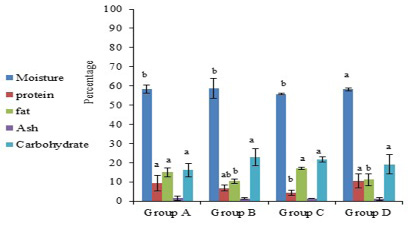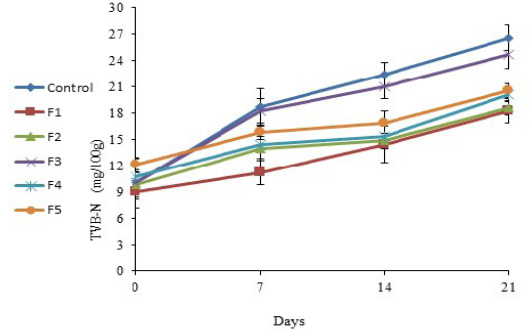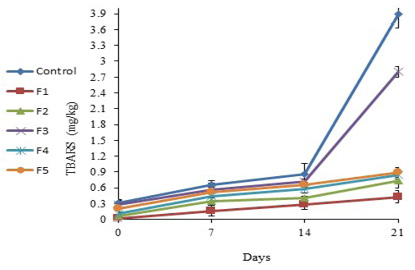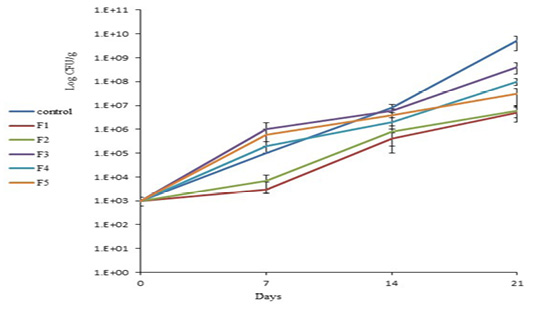Quality Characteristics of Beef Burger Formulated with Olive and Rice Bran Oils
Quality Characteristics of Beef Burger Formulated with Olive and Rice Bran Oils
Amal Ramadan Fawy1, Hussein Yousef Ahmed2, El-Sayed S.E. Shabana3, Mohamed Abdelfattah Maky4*
Nutritional profile of various classes of Egyptian beef burger. Percentage of moisture, protein, fat, ash and carbohydrate. Data are mean ± standard deviations. Various letters indicated a statistically significant difference between the means at p < 0.05.
Nutritional profile of various formulated beef burger. Percentage of moisture, protein, fat, ash and carbohydrate. Data are mean ± standard deviations. Various letters indicated a statistically significant difference between the means at p < 0.05.
pH values of various formulated beef burger. Data are mean ± standard deviations.
TVB-N values of various formulated beef burger. Data are mean ± standard deviations.
TBARS values of various formulated beef burger. Data are mean ± standard deviations.
APC of various formulated beef burger. Data are mean ± standard deviations.











